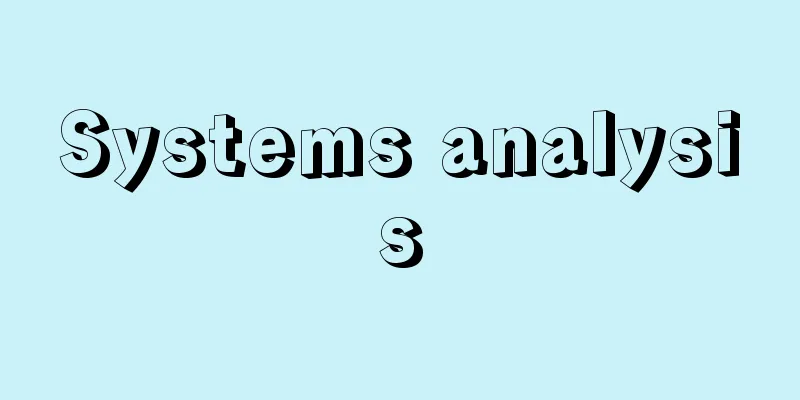Diocletian - Gaius Aurelius Valerius Diocletianus

|
Roman Emperor (reigned 284-305). The emperor who overcame the crisis of the empire and established the Late Roman Empire - an absolute monarchy. He was born into a low-class peasant family in Dalmatia. It is said that his father was a slave. He became a soldier and rose through the ranks, and was elected emperor by the legionnaires after the sudden death of Emperor Cars (reigned 282-283) during an expedition to the East. He was a very practical, capable and powerful man, and after ascending to the throne, he steadily implemented a plan to reorganize the empire. First, he adopted a divided government system, with General Maximian as co-emperor of the west, and in 293 he appointed Constantius and Galerius as co-emperors of the east and west, forming a tetrarchy with four emperors. He himself had a palace in Nicomedia and was in charge of Asia Minor to Egypt, and Maximian and Constantius put down the peasant revolt in Gaul, while Galerius defeated Persia, so the division of government was effective. However, the unity of the empire was still maintained in the legislative, military and economic aspects. First, he inherited Aurelian's plan to reorganize and strengthen the legions, which reached hundreds of thousands of soldiers, and the special forces and cavalry made up of different ethnic groups were also strengthened. In parallel with the establishment of peace, Diocletian reorganized the administrative system, dividing the entire empire into four districts under the rule of the four emperors, with 12 districts (Dioecesis) and about 100 provinces established under them, improving the effectiveness of the administration and judiciary. He increased the number of bureaucrats, separated the military and administrative functions, and gradually established a strict hierarchy. The emperor's legislative power, military command power, and administrative power were strengthened beyond compare, and even though the emperor ruled over four emperors, Diocletian's authority was immense. In order to ideologically strengthen the absoluteness of his imperial power, he placed importance on the belief in the traditional Roman gods, restored these temples and rituals, and called himself Jovius, the earthly embodiment of Jupiter, and had other emperors choose their own patron gods. He also introduced Persian-style ceremonies when meeting with his subjects, sitting on the throne in lavish clothing and having people kneel down before him. In addition, he actively carried out large-scale construction, road construction, and land reclamation, but the financial burden of these and the maintenance of the army was enormous, so it can be said that the main purpose of the administrative reorganization was to make tax collection more efficient. Under him, a unified tax system was introduced to the empire. This was a combination of a capitatio (a poll tax levied on each person) and a yuga (a land tax) that levied whatever product was paid, converted into a unit of land called a land unit. It was applied everywhere except Egypt and parts of Asia Minor, and was of great benefit in terms of the convenience of taxation. However, the financial burden caused by the expansion of the military, the imperial court, and the bureaucracy was placed on the city dwellers, and the economy fell into a slump as a result of this rationalization of taxation. The decline of the upper classes of the cities and their flight from the cities, as well as the departure of the aristocracy, who owned large amounts of land, became noticeable. The empire tried to suppress this trend by forcing the city dwellers to fulfill their obligations and by fixing their status and occupations, and also tried to suppress the rise in prices that accompanied the devaluation of the currency by issuing a maximum price decree (301). In general, the empire moved towards a system in which the people were hierarchically ranked under the imperial despotism and were forced to serve the nation, and it is said that this marked the beginning of absolute monarchy (Dominatus). At the end of his reign in 303, Diocletian ordered a great persecution of Christians, starting with having his soldiers destroy the church in Nicomedia. He executed and expelled Christians in the imperial court, then closed churches and forbade worship, confiscated Bibles, and arrested and tortured clergy. A theory has already been put forward by contemporary Lactantius that this was at the instigation of the co-emperor Galerius, who was particularly hostile to Christianity, but it is likely that Diocletian himself, in his position to protect the traditional religion that was the backbone of the empire, ordered the elimination and conversion of Christians who did not participate in the ceremonies to the gods and often showed rebellious attitudes in the imperial court and army. In the midst of the persecution, Diocletian became seriously ill, and although he finally recovered, in May 305, he abdicated the imperial throne along with the other legitimate emperor Maximianus, and spent the rest of his life as a citizen in Spoleto. After that, the struggle for power intensified, the persecution failed, his wife and daughter were exiled and killed, and he died of illness in despair. [Nobuo Matsumoto] [Reference] |The palace of the Roman Emperor Diocletian was built over a period of 10 years starting in 295. The photo shows the Peristil square within the palace. Part of the World Heritage Site "Historic Site of Split and Diocletian's Palace" (Croatia, registered in 1979) Split, Croatia ©Masashi Tanaka "> Diocletian's Palace ruins A Romanesque cathedral remaining on the site of Diocletian's Palace. It was once the mausoleum of Emperor Diocletian. Part of the World Heritage Site "Historic Site of Split and Diocletian's Palace" (Croatia, registered in 1979) Split, Croatia ©Masashi Tanaka "> Cathedral of Saint Domnius Source: Shogakukan Encyclopedia Nipponica About Encyclopedia Nipponica Information | Legend |
|
ローマ皇帝(在位284~305)。帝国の危機を克服、後期ローマ帝国―専制君主政を樹立した皇帝。ダルマチアの下層農民出身。父は奴隷だったともいわれる。兵士となって昇進し、東方遠征中、カルス帝(在位282~283)の変死で軍団兵により皇帝に推戴(すいたい)された。 彼は、きわめて実際的で有能かつ指導力に富む人物で、登位後は着々と帝国再編策を実施した。まず、将軍マクシミアヌスを西方の共治帝として分割統治を採用し、293年にはコンスタンティウス、ガレリウスを西と東の副帝に任じ、2正帝とあわせ、4人の皇帝によるテトラルキア(四分統治制)が成立した。彼自身はニコメディアに宮殿をもち、小アジアからエジプトまでを担当し、マクシミアヌスとコンスタンティウスはガリアの農民反乱を鎮圧し、ガレリウスはペルシアを破るなど分治の効果はあがった。が、立法、軍事、経済面で帝国の統一はなお保持されていた。まず、アウレリアヌスの策を受け継いで、軍団の再編強化を行い、軍団兵は数十万に達し、異民族からなる特殊部隊、騎兵も増強された。平和の確立と並行して行政機構再編を行い、全帝国を四帝統治の4道に分け、その下に12の管区(ディオエケシス)と約100の属州を設け、行政、司法の実効性を高めた。官僚の数を増やし、軍事と行政を分離して、しだいに厳密な位階制を打ち立てていった。皇帝の立法権、軍指揮権、行政権は比類なく強化され、四帝分治とはいえ、ディオクレティアヌスの権威は絶大であった。 彼は、帝権の絶対性をイデオロギー的に強化するため、伝統のローマの神々への信仰を重視して、これらの神殿や祭儀を復興し、自らはユピテルの地上の体現者たるヨウィウスと称し、他の皇帝にもそれぞれ守護神を選ばせた。また、臣民と謁見するに際しては、ペルシア風の儀礼を導入し、豪華な衣装で玉座に座り、人々に拝跪礼(はいきれい)を行わせたという。そのほか、大建築、道路建設、開墾なども盛んに行われたが、これらおよび軍隊維持のための財政負担は甚だしく、行政再編の主目的は徴税等の能率化だったともいえる。彼の下で帝国に統一的税制が導入された。これは、人間1人当りに課する人頭税(カピタティオ)と、納める産物はなんであれユガという土地の単位に換算して課する土地税(ユガティオ)とを統合したもので、エジプトや小アジアの一部を除く各地に適用され、徴税の便に益するところは大であった。しかし、軍隊、宮廷、官僚の肥大化による財政負担は、このような徴税合理化によって都市民に重くのしかかり、経済も不振に陥った。都市上層民の没落と都市からの逃亡、大土地所有貴族の都市からの離脱も目だち始めた。帝国は、都市民の義務履行を強制的に守らせ、身分・職業を固定化してこの傾向を抑えようとし、また貨幣改悪に伴う物価騰貴に対しては、最高価格令を発して抑制に努めた(301)。総じて帝国は皇帝専制の下に国民が階層序列化され、対国家奉仕義務を強制される体制に向かい、ここに専制君主政(ドミナトゥス)が始まったといわれるのである。 ディオクレティアヌスは、治世末の303年、ニコメディアの教会を兵士に破壊させたのを皮切りに、キリスト教徒大迫害を命じた。宮廷内教徒を処刑、追放し、ついで教会を閉じて礼拝を禁じ、聖書を没収し、聖職者を逮捕、拷問した。これは、とくにキリスト教に敵意をもっていた副帝ガレリウスの教唆によるとする説が、すでに同時代のラクタンティウスらによって出されているが、やはりディオクレティアヌスが帝国の支柱たる伝統宗教を護持する立場から、神々への祭儀に加わらず、宮廷や軍隊で反抗的態度を示すことが多くなっていた教徒の排除―改宗を自ら命じたものであろう。迫害のさなか、ディオクレティアヌスは重病になり、ようやく回復したものの、305年5月、もう1人の正帝マクシミアヌスとともに帝位を辞し、一市民としてスポレトで余生を送った。その後政権争いが苛烈(かれつ)となり、迫害は失敗に帰して、彼の妻、娘も追放、殺害され、彼も失意のうちに病没した。 [松本宣郎] [参照項目] |295年から10年をかけて造営されたローマ皇帝ディオクレティアヌスの宮殿。写真は宮殿内の広場ペリスティル。世界文化遺産「スプリトの史跡群とディオクレティアヌス宮殿」の一部(クロアチア・1979年登録) クロアチア スプリト©Masashi Tanaka"> ディオクレティアヌス宮殿跡 ディオクレティアヌス宮殿跡に残るロマネスク様式の大聖堂。かつては皇帝ディオクレティアヌスの霊廟であった。世界文化遺産「スプリトの史跡群とディオクレティアヌス宮殿」の一部(クロアチア・1979年登録) クロアチア スプリト©Masashi Tanaka"> 聖ドムニウス大聖堂 出典 小学館 日本大百科全書(ニッポニカ)日本大百科全書(ニッポニカ)について 情報 | 凡例 |
<<: Diogenes of Sinope (English spelling)
>>: Epistle to Diognetus - Epistle to Diognetus
Recommend
Toshifumi Kasuga
...A bribery case involving the acquisition of 14...
CSG Union - CSG Union
Its official name is the Japan Federation of Chemi...
Green stink bug - Aokusakamemushi (English spelling) green stink bug
It is an insect of the Hemiptera class of Insecta...
《Esop's Fables》 - Esop's Fables
...The first 30 stories are Aesop's fables, a...
Martianus Capella
A writer active in Carthage from around 365 to 440...
Aheki - Aheki
…The character for asthma used in Japanese today ...
Molecular spectrum
The spectrum of light absorbed or emitted by a mo...
Hsu, FLK (English spelling) HsuFLK
…However, the principle of social cohesion in Jap...
Negative image
The image on a film or dry plate after exposure an...
Back Myogi
...The mountain has been severely eroded, and the...
Mayer, AFJK (English spelling) MayerAFJK
...that is, (1) cellular tissue, (2) animal nervo...
Soro Shiwa - Soro Shiwa
A one-volume treatise on poetry from the Song dyn...
Toompea
…A port on the Gulf of Finland, it is the politic...
"Edo Proud Love Merchant" - Edo Jiman Koi no Akindo
...The main theme of the Joruri play "Nisei ...
Fraxinus
...A deciduous tree of the Oleaceae family. In th...




![Newfoundland [species] (English spelling)](/upload/images/67cc7290298b8.webp)




